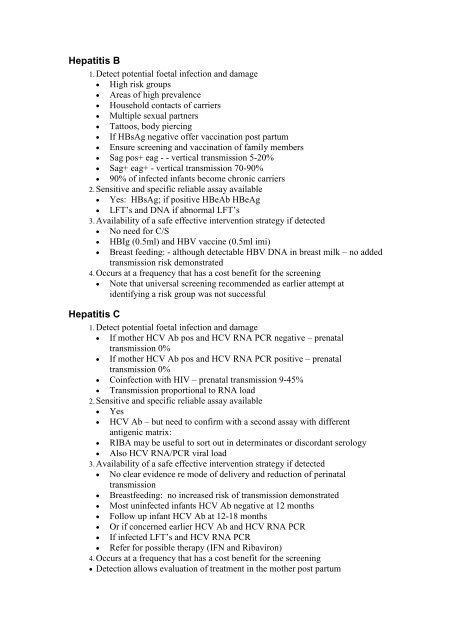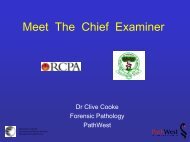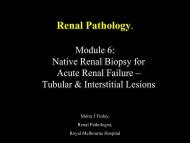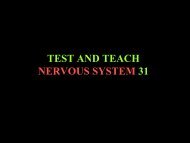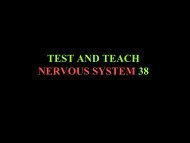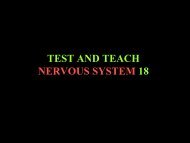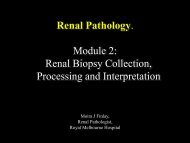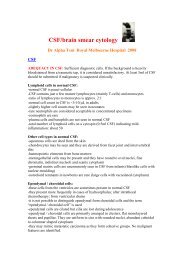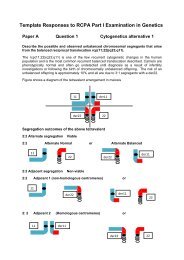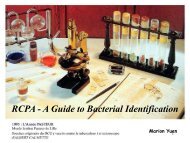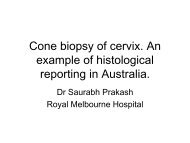Model Answers Microbiology Written examinations 2007 - RCPA
Model Answers Microbiology Written examinations 2007 - RCPA
Model Answers Microbiology Written examinations 2007 - RCPA
You also want an ePaper? Increase the reach of your titles
YUMPU automatically turns print PDFs into web optimized ePapers that Google loves.
Hepatitis B<br />
1. Detect potential foetal infection and damage<br />
High risk groups<br />
Areas of high prevalence<br />
Household contacts of carriers<br />
Multiple sexual partners<br />
Tattoos, body piercing<br />
If HBsAg negative offer vaccination post partum<br />
Ensure screening and vaccination of family members<br />
Sag pos+ eag - - vertical transmission 5-20%<br />
Sag+ eag+ - vertical transmission 70-90%<br />
90% of infected infants become chronic carriers<br />
2. Sensitive and specific reliable assay available<br />
Yes: HBsAg; if positive HBeAb HBeAg<br />
LFT‟s and DNA if abnormal LFT‟s<br />
3. Availability of a safe effective intervention strategy if detected<br />
No need for C/S<br />
HBIg (0.5ml) and HBV vaccine (0.5ml imi)<br />
Breast feeding: - although detectable HBV DNA in breast milk – no added<br />
transmission risk demonstrated<br />
4. Occurs at a frequency that has a cost benefit for the screening<br />
Note that universal screening recommended as earlier attempt at<br />
identifying a risk group was not successful<br />
Hepatitis C<br />
1. Detect potential foetal infection and damage<br />
If mother HCV Ab pos and HCV RNA PCR negative – prenatal<br />
transmission 0%<br />
If mother HCV Ab pos and HCV RNA PCR positive – prenatal<br />
transmission 0%<br />
Coinfection with HIV – prenatal transmission 9-45%<br />
Transmission proportional to RNA load<br />
2. Sensitive and specific reliable assay available<br />
Yes<br />
HCV Ab – but need to confirm with a second assay with different<br />
antigenic matrix:<br />
RIBA may be useful to sort out in determinates or discordant serology<br />
Also HCV RNA/PCR viral load<br />
3. Availability of a safe effective intervention strategy if detected<br />
No clear evidence re mode of delivery and reduction of perinatal<br />
transmission<br />
Breastfeeding: no increased risk of transmission demonstrated<br />
Most uninfected infants HCV Ab negative at 12 months<br />
Follow up infant HCV Ab at 12-18 months<br />
Or if concerned earlier HCV Ab and HCV RNA PCR<br />
If infected LFT‟s and HCV RNA PCR<br />
Refer for possible therapy (IFN and Ribaviron)<br />
4. Occurs at a frequency that has a cost benefit for the screening<br />
Detection allows evaluation of treatment in the mother post partum


